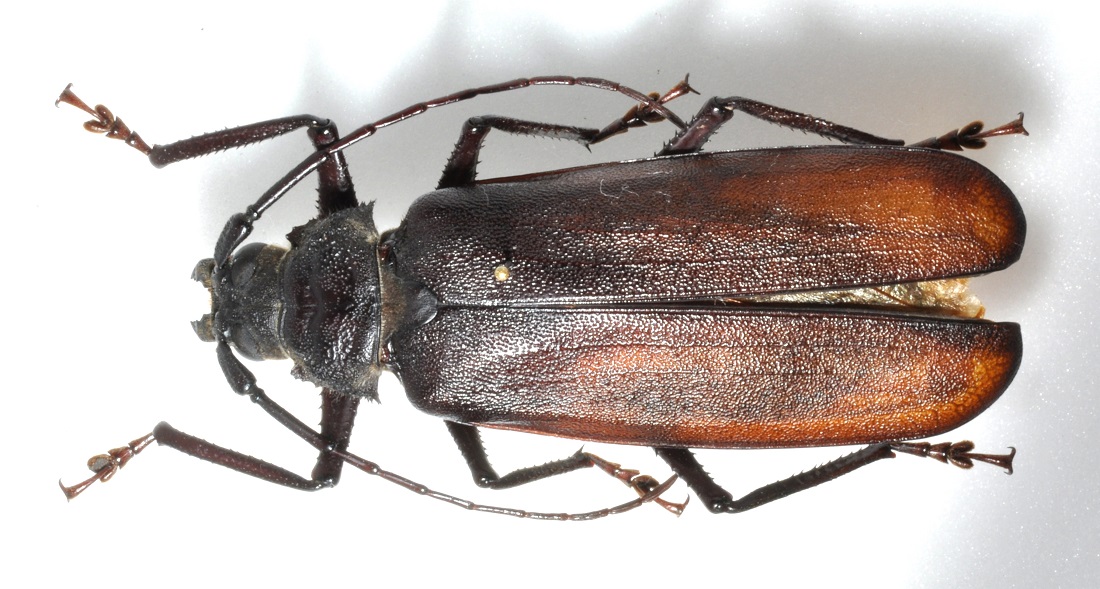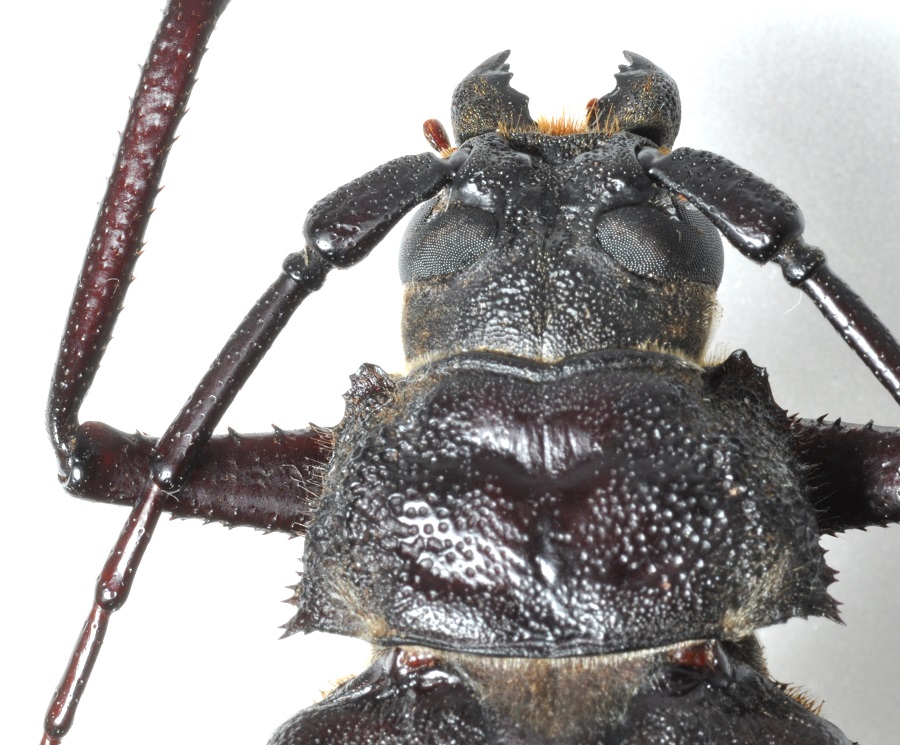| T O P I C R E V I E W |
| Pierre |
Posted - 07/02/2013 : 10:41:05

I don't know what to think about this female. It came along with a series of typical Macrotoma palmata.
But the pronotum is lacking the palmata-like smooth area on the disk and the upper side of the third antennomere is not flattened but convex in regular way, which should exclude Macrotoma.
Tanzania, Rungwe Mts. 67mm. |
| 4 L A T E S T R E P L I E S (Newest First) |
| Pierre |
Posted - 08/02/2013 : 10:49:52
Macrotoma... bon, eh bien les descriptions collent. Et, de toute manière, en partant dans la direction inverse (en suivant la piste du troisième article des antennes convexe, non déprimé) on n'arrive à aucune conclusion satisfaisante, donc il ne reste plus que Macrotoma.
Il semblerait que l'histoire de ce fameux troisième article soit tout aussi peu fiable que celle de la sculpture du disque pronotal, du moins dans des cas comme celui-ci...
Merci Norbert et Francesco!
|
| Francesco |
Posted - 08/02/2013 : 09:49:52
quote:
Originally posted by Pierre
But the pronotum is lacking the palmata-like smooth area on the disk .... which should exclude Macrotoma.
Actually, the pronotum of Macrotoma-species is strongly variable.
Quentin & Villiers (1981) decided to elevate Bandar to genus level just basing on this character (pronotum with or without smooth areas). Such statement is deemed as valid still today.
Nonetheless, please observe the variability between this and this specimen both belonging to "Bandar" pascoei.
In my opinion Bandar is less than a subgenus; that is way I do not accept Bandar as a true genus in all catalogs I have done.
|
| Norbert |
Posted - 08/02/2013 : 08:29:24
I think this is a female of Macrotoma natala Thomson, 1861.
We can observe some spines on both side of femur, not with M. palmata. |
| Pierre |
Posted - 07/02/2013 : 10:41:51
 |


